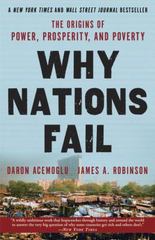Give correct explanation
Problem 1. Relative and Absolute Risk aversion (6 points) In class we introduced the concepts of relative and absolute risk aversion, but we have not used them. This exercise introduces you to two useful classes of utility functions. 1. Consider the exponential utiliy function - exp (-pc) . Show that it is increasing (u' > 0) and concave (u" 0, that is, as long as the agent is risk-averse. Show that this function has constant absolute risk aversion coefficient ry given by p. (2 points) 2. Consider the power utiliy function . for p # 1. Show that it is increasing (u' > 0) and concave (u" 0. Show that this function has constant relative risk aversion coefficient FR given by p. (2 points) 3. Consider the log utility function In (c) . Show that it is increasing (u' > 0) and concave (u" 0. Show that this function has constant relative risk aversion coefficient ra equal to 1. (in fact, it is possibile to show lim, 1 "-1 = In (c) - you are not required to prove this) (2 points).Prot Maximization in Mathematical Economics Problem 1. Suppose a rm faces a demand curve for its product P = a - bit}, and the i'trrn's costs of production and marketing are C(Q} = of} + d, where P is price, Q is quantity, and aI h, c, and d are positive constants. Find the following: a The formula for prot II in terms of Q. h. The rst order condition (FOE!) for maximum prot. c. The second order condition [50ij for maximum prot Problem 2. Suppose the firm faces a demand curve for its product P = 32 - 20, and the firm's costs of production and marketing are C(Q) = 2Q-. Find the following. a. The formula for profit II in terms of Q. b. The FOC and SOC for maximum total revenue. c. The price and quantity that maximize total revenue, and the corresponding value of total revenue. d. The FOC and SOC for maximum profit. e. The price and quantity that maximize profit, and the corresponding value of profit. f. What would the competitive price and quantity be, assuming C(Q) = 2Q represented the industry cost function?3. Find the maximum values of the objective function F subject to the given constraint for each of the following, using the Lagrangian method. a. F(x, y) = xy, subject to 5x + 2y = 20 b. F(x, y) = 2x /Zy'/2 subject to x7 + y = 8 c. F(x, y, z) = xyz subject to x' + y~ + z* = 12 d. F(x, y, z) = x + y + z subject to x + y + z> = 129. Intertemporal allocation of a depletable resource: suppose the demand for a resource in year t is P, = a - bq, where t indexes the year, P is price, q is quantity demanded, and a and b are positive constants. Suppose also that the total cost of producing the resource in year t is TC(q) = cq:, where c is a positive constant. Suppose also that the total amount of the resource is Q. The real interest rate is r. Assume that the objective is to maximize present value of net benefits to Consumers consuming this resource (i.e., not a monopoly problem). a. Set up the Lagrangian for this problem, assuming t = (0, 1, 2, .., T) b. Show what the Kuhn-Tucker FOC are for this problem. c. Why are the Kuhn-Tucker conditions relevant, rather than equality constraints? d. Solve this problem for a = 8, b = 0.4, c = 2, Q = 20, r = 0.05, and T = 2 (i.e., three period model. e. The problem in (d) is a dynamic problem. What is meant by "dynamic?" How much would be consumed each period if Q = 100? What would be the value of relaxing the constraint Q = 20 in each period?Optimization with Inequality Constraints Problem 4. Use the Kuhn-Tucker conditions to find maxima for the following: a. F(x, y) = xy, subject to (i) x' + y'















